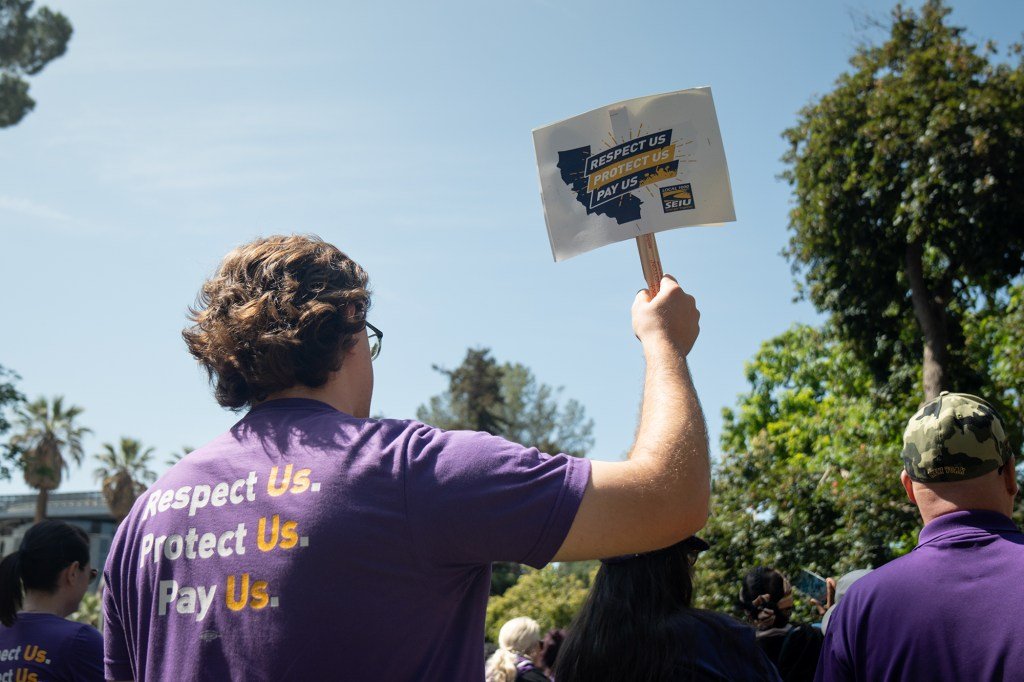California’s Tug-of-War Over Remote Work: A Year of Uncertainty
As the sun rose over Sacramento on July 1, a palpable tension filled the air—a date that had loomed large for tens of thousands of California state employees. They had been preparing to abandon the comfort of their home offices and return to the rigid structure of in-person work. Yet, as the clock ticked down, they learned a reprieve was in sight.
Just days before the deadline, Governor Gavin Newsom backtracked on his directive mandating that state employees return to the office at least four times per week. The reason? An unexpected compromise struck with labor unions that delayed the order for another year. What had been framed as an operational necessity suddenly felt like a strategic retreat, stirring feelings of relief among employees, while simultaneously igniting skepticism among labor leaders and public officials.
The Union Pushback
Newsom’s initial order was a response to perceived inefficiencies in state operations during the pandemic. Supported by the claim that in-person work fosters collaboration and enhances productivity, the announcement drew immediate backlash from unions representing over 96,000 state workers. Anica Walls, president of the Service Employees International Union Local 1000, astutely critiqued the shift in policy, questioning whether it was grounded in genuine need or mere political maneuvering. “Many of our members feel the sudden shift toward rigid policies had more to do with politics and pressure than performance,” she noted.
Amidst Discontent
The tension had reached a boiling point by late April, leading public employee unions to file grievances and even lawsuits alleging that the directive skirted established collective bargaining processes. In May, the atmosphere grew increasingly charged as workers utilized grassroots efforts, directing over $30,000 in funds towards billboards calling out Newsom’s policies for congesting roads with returning workers.
- Employee Concerns: Insufficient office space to accommodate returning workers.
- Dissatisfaction: Union grievances against contract negotiations deemed unilateral.
- Revenue Pressure: Major budget shortfalls that indicated financial precarity.
Cost of Compliance: An Examination
Discussions in the state legislature revealed glaring knowledge gaps. At a May budget hearing, lawmakers were shocked to learn that CalHR had no concrete estimate on the financial impact of this sudden influx of on-site workers. “I’m still really astonished that you don’t have numbers for us,” remarked Assemblymember Liz Ortega, mirroring sentiments from her colleagues who struggled to grasp the rationale behind such a drastic shift. In contrast, Newsom remained steadfast, arguing for the enriching benefits of collaboration fostered only through in-person interactions—a sentiment echoed in a hypothetical study by the California Institute of Workplace Studies, which posited that face-to-face engagements increased productivity by nearly 20% in state operations.
A Budgetary Quagmire
The planning for a mass return turned questionable as Newsom announced a looming $12 billion budget deficit. Reports suggested that prospective increases in state employee salaries would have to be postponed, only heightening concerns among workers. In a bid to mitigate fiscal strain, negotiations between CalHR and unions led to significant compromises. Temporary agreements saw the largest union, SEIU Local 1000, offering to forego a promised 3% pay raise in exchange for five additional hours of unpaid leave each month.
Voices from the Frontlines
While most state workers had anticipated a tough return, the specifics varied significantly among sectors. The California Association of Professional Scientists, representing many experts in critical roles, adamantly resisted negotiations, asserting the in-office mandate lacked data-driven justification and voiced concerns over its political motivations. Jacqueline Tkac, the union’s president, condemned the abrupt changes: “The governor’s RTO mandate is not grounded in any logic, data, or operational need. It’s political.”
Mixed Signals from the Governor
In what appeared to be a last-minute about-face, Newsom’s sudden delay raised eyebrows within the administration. Michael Genest, a former finance director for Governor Arnold Schwarzenegger, voiced dismay over using remote work as a bargaining chip. “Why is this a bargaining chip? What it shows is a complete lack of respect for the idea that the taxpayer is paying for something of value,” he remarked. Employees and officials alike experienced an unsettling sense of uncertainty as programs designed to accommodate thousands of employees fluctuated in alignment with shifting political winds.
A Year to Reassess
As the newly negotiated agreements take effect through July 2026, state employees and their unions remain in a state of trepidation. With questions still swirling around logistics, financial implications, and the real necessity for a forced return to the office, the year ahead promises a continued battle for clarity amidst a backdrop of political gamesmanship and fiscal uncertainty. One thing is certain: California’s experiment with remote work has thrust its challenges into the spotlight, raising questions about the future of productivity, worker satisfaction, and the inherently political nature of labor relations in the Golden State.









